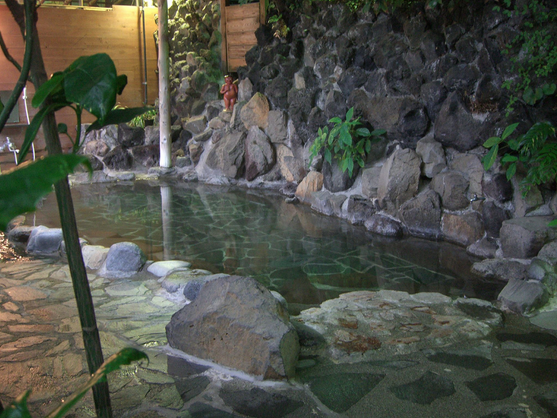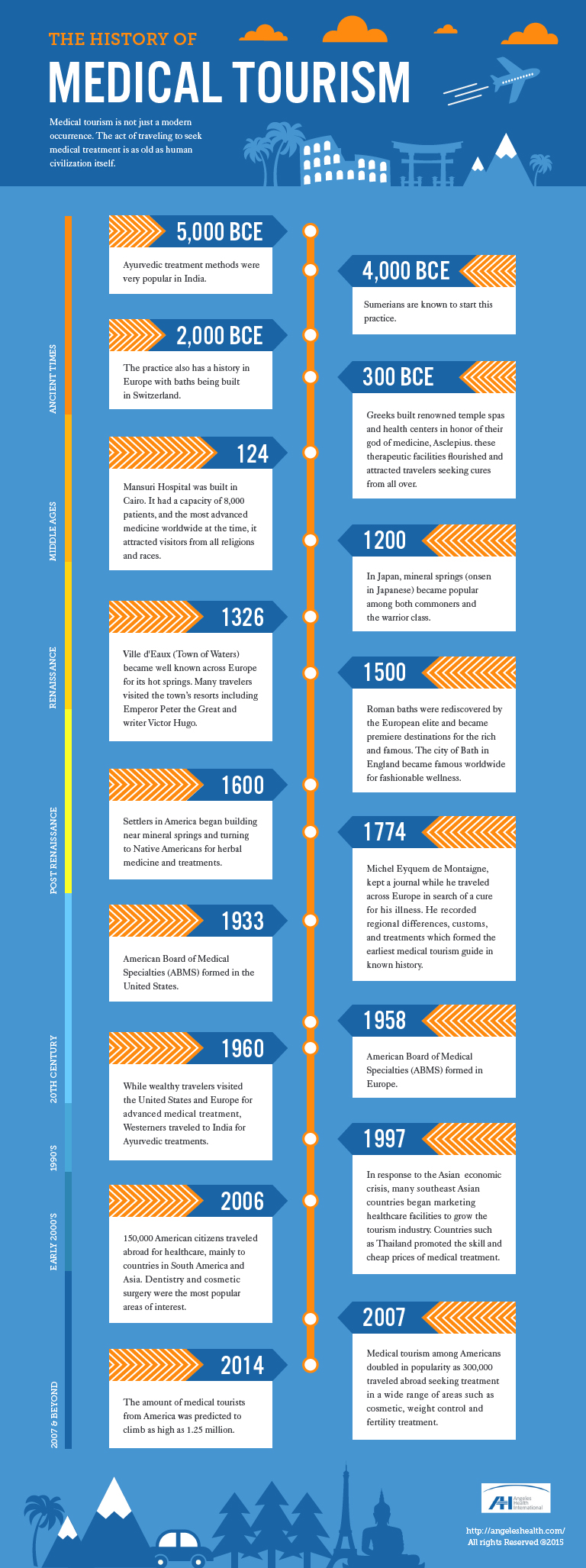Medical Tourism Around the World
When you hear the term “medical tourism,” you may have some questions or concerns come to mind about its legitimacy or safety. It’s perfectly natural to be cautious when it comes to making important decisions for your health or the health of your loved ones.
Share this Infographic On Your Site
Medical tourism has been beneficial in helping people get the high-quality care they need at a price they can afford. With major insurance companies now offering treatment abroad as an option, it is important to understand how this can benefit you and your family.
A Brief History of Medical Tourism
People have traveled abroad for medical treatment for centuries. The practice itself can be traced back to the ancient Greeks. During the Georgian and Victorian eras in England, many people traveled abroad to spa towns for hot springs, baths, and other health treatments. Spa towns were common all over Europe in places such as Hungary, Austria, and Germany.
The United States inherited this tradition, and many Americans traveled to natural springs in the southwestern regions in the 18th century. This practice is hardly unique to Europeans and Americans. In Japan, mineral springs have been used for centuries and in India the practice may go as far back as 5,000 years.
The reasons people engage in medical tourism haven’t changed that much from the time of the Ancient Greeks to the modern era. These reasons can include cost, treatment time, insurance coverage, or the misunderstanding of an illness in the patient’s native country.
In the modern world, many people travel abroad seeking faster or more affordable treatment. These travelers come from many of the world’s most well-regarded nations such as the United States, Canada, Japan, and several countries in Europe. Medical tourism has especially grown in the United States in recent years with 750,000 patients getting treatment abroad in 2007.
However, time and financial concerns are not the only reasons for medical tourism. In some cases, insurance companies have strict limits on certain types of medical treatments. For example, many people with joint problems are looking abroad for orthopedic care due to a small pool of treatment options available under their insurance policies, or no coverage for their particular ailments at all.
Additionally, the majority of medical tourism (estimated at roughly 40 percent) is related to dental issues. Many Americans do not have dental coverage as part of their insurance package, making dental care extremely expensive in some cases.
Where Are People Seeking Treatment Abroad?
Popular destinations for medical treatment and procedures include several southeast Asian nations such as Malaysia, Singapore, South Korea, Taiwan and Thailand. Other nations with a high amount of medical tourism are Turkey, Costa Rica, India, and Israel. For cosmetic surgery, South American nations such as Brazil, Argentina, Colombia and Costa Rica are among the most popular. For many Americans and Canadians, Mexico is one of the top medical tourism destinations due to its close proximity and well-renowned healthcare services. Much of medical tourism depends on proximity, for example many Europeans travel to Turkey for medical tourism.
As you can see, medical tourism is a worldwide phenomenon. No one nation has cornered the market on medical tourism. The United States also receives patients from other countries seeking medical treatment as well.
The Current State of Medical Tourism
As medical tourism has become more mainstream, there have been persistent efforts to assure quality and standards of treatment. International accreditation organizations such as the Accreditation Canada and the Joint Commission International in the United States have given official accreditation to several international hospitals and offered guidance to patients. Many international hospitals are actively seeking approval for accreditation to hopefully attract patients by officially proving the quality and standards of their medical care. Angeles Health already has one hospital in their network that is JCI accredited.
Several companies have come into existence whose sole business is to help patients get treatment abroad. Additionally, hospitals like Angeles Health are attracting patients by using dedicated, U.S.-based case management teams to make the medical tourism experience as safe and smooth as possible.
Insurance companies are also starting to take a more positive view of medical tourism. For example, the insurance provider WellPoint is allowing employees of one of its client companies to seek treatment for non critical ailments in India. By covering these expenses, WellPoint is hoping to prevent a loss in business that has been occurring in the insurance industry due to policyholders avoiding their insurance companies all together by paying for treatment out of pocket in other nations.
Medical Tourism Could Be Right For You
Medical tourism is not bad thing nor is it the path of last resort that many falsely assume it is. With international accreditation growing annually and insurance companies starting to offer it as an option, international healthcare treatment is becoming a more accepted part of modern medical care and treatment. It could be a safe and affordable option for you and your family.
Works Cited:
http://content.time.com/time/health/article/0,8599,1861919,00.html
http://www.news-medical.net/health/Medical-Tourism-History.aspx
http://en.wikipedia.org/wiki/Medical_tourism
photo credit: Mens – Kappa Tengoku Notemburo – Hakone-Yumato via photopin (license)







